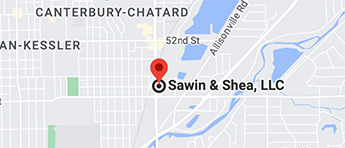Although bankruptcy is often the only solution to get your finances back in order if you are struggling under mountains of debt, it does show up on your credit report for years, even after the bankruptcy has been discharged. Understandably, this can be frustrating, but there is no shame in filing for bankruptcy, and it can ultimately improve your financial situation.
However, for this reason, it’s not uncommon for people to want to know how to remove bankruptcy from a credit report. Whether you want to open new lines of credit, secure a new loan, or buy a home—there are many reasons why you might want to get rid of your bankruptcy to improve your credit score.
Unfortunately, most bankruptcies cannot be removed from a credit report, not unless you qualify under certain conditions. If you don’t qualify, you might simply have to wait until the bankruptcy leaves your report after the standard reporting time. You can, however, make your credit better post-filing. In many cases, the act of filing a bankruptcy makes credit better by ending ongoing negative information from continuing to appear on the reports. In either case, speaking with a bankruptcy attorney may help.
At Sawin & Shea, we understand how difficult going through bankruptcy can be and are dedicated to helping make the process as smooth and stress-free as possible for our clients. Whether you are filing for Chapter 7 or Chapter 13, we can assist you, both with the process of filing and even after your bankruptcy has been discharged.
Credit Scores: What Happens When You File for Bankruptcy?
When you file for Chapter 7 bankruptcy, you will list all of your debts, non-exempt assets can then be liquidated to pay back your creditors. Most Chapter 7 cases are what is called a “no-asset” case and the debtors keep everything they have. Most types of debts are typically discharged.
With Chapter 13 bankruptcy, instead of discharging all of your debt, a payment plan is worked out so that you can pay a percentage of your debts over a three to five-year period. In this situation, your creditors and lenders might get more money back than they would with a Chapter 7. This process can still hurt your credit, but it might not affect it as severely as it would if you filed Chapter 7.
How Long Does Bankruptcy Stay on Your Credit Report?
The length that a bankruptcy stays on your credit report will depend on the type of bankruptcy you filed. The two primary types of bankruptcy are Chapter 7 and Chapter 13.
A Chapter 7 bankruptcy can remain on your report for up to 10 years. Chapter 13 will stay on your credit report for 7 years.
Who Reports Bankruptcy to the Credit Bureaus?
Despite what some may believe, the Bankruptcy Court does not interact with credit bureaus, meaning they do not report your bankruptcy to them. However, the court has a legal obligation to maintain an accurate record of bankruptcy filings, and once a case is filed, it becomes permanent and public record.
As such, anyone or any organization can access bankruptcy files either by visiting the courthouse or through the online system. So, it is usually the creditors or the credit bureau themselves that access this information and report it. The Bankruptcy Court has no control over what credit bureaus do with the information once they access it.
How to Remove Bankruptcy from a Credit Report
No one can legally remove accurate information about bankruptcy from their credit report. However, under the Fair Credit Reporting Act, you can file a dispute with the credit bureau if the information on your report is inaccurate or incomplete.
If your bankruptcy is legitimate, you will not be able to legitimately dispute it. In this case, your only option is to wait until the credit bureau removes it after the standard seven to ten years. If the bankruptcy is not removed after that time, you can file a dispute to have it removed. In the meantime, make your credit better by doing all the things that make credit good. Do not overextend yourself on credit and make timely payments on credit accounts.
Common errors or mistakes that credit bureaus make regarding bankruptcies that you can file a dispute for include:
- Misspelling errors, wrong addresses, wrong dates, etc.
- Discharged debts still showing up on your credit report.
- Mistaken identity or someone else’s bankruptcy showing up on your credit report.
- The bankruptcy still showing after the seven to ten-year period.
If any of these mistakes show up, you have the right to dispute them. However, the bankruptcy itself will still appear on your report for the standard amount of time if it is legitimate.
You can file your dispute with the credit bureau by phone, by mail, or by using their online system. However, it is generally a complex process, and if you have concerns about your rights, you may want to work with a bankruptcy attorney to help you handle your case.
How Sawin & Shea, LLC Can Help
For help with your bankruptcy case, get in touch with the Indiana attorneys at Sawin & Shea. We provide compassionate and understanding representation to those struggling with debt.
Our attorneys can help walk you through the bankruptcy process every step of the way. We can even offer guidance after your bankruptcy case has ended to help you rebuild your credit.
Contact us at 317-759-1483 or send us an email for a free consultation today!



